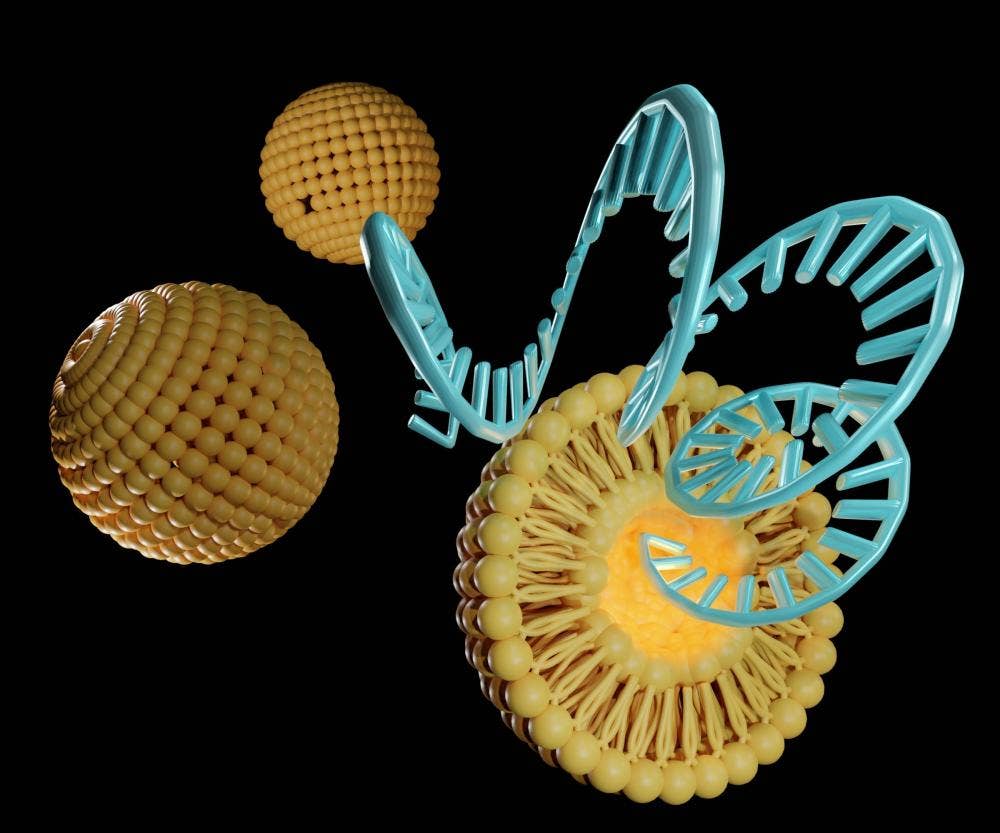Advances in mRNA nanotherapy
Since the 1961 discovery of messenger RNA (mRNA) and its role in converting genetic information into proteins, countless attempts have been made to harness mRNA for therapeutic purposes. And researchers’ efforts have paid off - today, mRNA vaccines are globally recognized for their success in tackling the COVID-19 pandemic. A recent review, published in Nano Today, reports key milestones in mRNA therapy during the past 60 years, including breakthroughs in the development of nanoparticle-based delivery systems. In addition, technological innovations in mRNA design and synthesis are discussed, including TriLink’s CleanCap® technology, which was used to cap the Pfizer/BioNTech BNT162b2 COVID-19 vaccine.

Key milestones in mRNA nanotherapy
Milestones paving the way to mRNA nanotherapy as we now know include the 1984 discovery that mRNA can be synthesized at scale in vitro using SP6 RNA polymerase and the 1993 observation that immunizing mice with mRNA encoding for influenza proteins elicits a cellular immune response. These findings prompted major advances in mRNA modification technologies and nanoparticle-based delivery systems. In 2020, the successful application of two mRNA vaccines against COVID-19 (Pfizer/BioNTech BNT162b2 and Moderna mRNA-1273) marked a turning point for mRNA nanotherapy that is driving future developments.
mRNA design and modifications
A primary challenge for mRNA therapy is minimizing the innate immune response to in vitro transcribed (IVT) mRNA molecules. One way of addressing this issue is to add a 5′ Cap 1 structure to the IVT mRNA, which serves as a molecular signature for self to reduce immunogenicity, improve mRNA stability, and facilitate more efficient translation. While capping has traditionally been performed post-transcriptionally using specialized enzymes, high production costs have led to the development of alternative methods. One approach uses cap analogs as RNA polymerase substrates for co-transcriptional capping. However, these can be incorporated into the mRNA in reverse orientation, prohibiting its recognition by ribosomes. Another uses an anti-reverse cap analog (ARCA) to circumvent this issue but is limited by low capping efficiencies. TriLink’s CleanCap® cap analogs not only improve capping efficiencies but also offer a more scalable, cost-effective solution by enabling co-transcriptional capping and forming a Cap 1 structure.
The mRNA poly (A) tail, untranslated regions (UTRs), and coding sequence (CDS) have also been targeted to improve efficacy in vivo. A poly (A) tail of approximately 120 nucleotides has proven to be optimal for mRNA synthesis, while increasing the GC content of the 3’ UTR improves mRNA stability. Introducing modified nucleosides such as pseudouridine (Ψ) and N1-methyl pseudouridine (m1Ψ) into the CDS decreases inflammatory responses without affecting protein expression.
Future perspectives
In combination, improvements to mRNA design and the development of increasingly sophisticated nanoparticle-based delivery systems promise to yield many further mRNA nanotherapies. Notably, clinical trials of mRNA nanotherapies for cancer have generated encouraging results.
Featured products: CleanCap® mRNA Capping Analogs
Related Products and Services: mRNA CDMO Services
Article reference: Su, L, Xu, M, Ji, Z et al. Delivery of mRNA for cancer therapy: progress and prospects, Nano Today 53, 102013 (2023)
https://www.sciencedirect.com/science/article/pii/S1748013223002621


